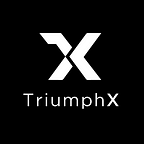Enhancing DeFi Through Cross-Network Collaborations and Blockchain Interoperability
Decentralized Finance (DeFi) has been a game-changer in the world of finance, but it’s not without its challenges.
One big challenge is that there are many different blockchains, each with its own unique ecosystem.
To truly thrive in a decentralized world, DeFi must transcend the confines of such individual blockchain networks.
This necessitates cross-network collaborations that harness blockchain interoperability, enabling seamless interactions between diverse platforms.
This article explores why DeFi needs cross-network collaborations and how interoperability can usher in a more integrated and efficient DeFi ecosystem.
Overcoming Silos: The Significance of Interoperability in DeFi
Blockchain interoperability, the ability of different blockchain networks to communicate seamlessly, is vital to DeFi’s growth.
According to the DeFi analytics aggregator DeFiLlama, more than 56% of the total value locked across DeFi platforms resides on the Ethereum blockchain, creating a closed ecosystem that limits innovation and adoption.
Interoperability breaks down these barriers by facilitating cross-chain transactions and fostering collaboration between different platforms.
Axelar, Hyperlane, and the ICON are examples of organizations focused on building interoperability infrastructure and tools that make it easier for developers to build across different blockchain networks and create applications that leverage the strengths of multiple blockchains.
Unlocking New Possibilities Through Composability
Composability in the context of blockchain interoperability refers to the ability to seamlessly combine and utilize various components or services from different blockchain systems in a single application or ecosystem.
By bringing blockchain interoperability into play, a decentralized application could effectively use a smart contract from one blockchain while utilizing tokens or data from another.
It enables a new type of flexibility and the opportunity to create highly customized solutions.
One example in DeFi is the cross-chain approach by Chainflip, which utilizes a virtual AMM on a state chain, enabling more efficient liquidity management than before.
Developers can also leverage more efficient processes, such as using one blockchain for its high transaction speeds and another for its robust security features.
As a result, users are able to benefit from the strengths and capabilities of multiple blockchains in a single application interface.
General message-passing bridges, services, and tooling abstract away differences between blockchains.
Providers such as Axelar and the ICON offer application developers versatile solutions for highly customized cross-chain interactions, resulting in improved user experience, increased efficiencies, and a wider range of services.
Expanding User Base and New Use Cases
Interoperability opens doors for DeFi projects to expand beyond their native blockchains, providing an excellent opportunity for businesses to reach a larger user base.
This also allows for co-marketing opportunities with other blockchain networks, resulting in auxiliary benefits. By collaborating with other platforms, DeFi projects can leverage each other’s strengths, creating a more comprehensive and robust ecosystem.
For example, earlier this year Cosmos-based blockchain Injectiveintegrated Solana into its network, which benefits not only Solana developers but also Cosmos users as they experience a wider range of services where they can use their native tokens.
Similarly, ICON’s recent integrations to Cosmos blockchains Archway and Neutron also lay the groundwork for a proliferation of services that serve DeFi services to reach a wider target audience across interconnected ecosystems.
Enhancing Security for Cross-Chain Transactions
Cross-chain connections have historically been fragile due to numerous bridge-related hacks, resulting in significant losses. DeFiLlama now monitors the metric “Total Value Hacked in Bridges,” which accounts for over one-third of the total cryptocurrency stolen in hacking incidents.
Given the frequency of bridge hacks, DeFi apps should reconsider their reliance on bridges and consider integrating with multiple bridges as a risk diversification strategy, as recommended by The Uniswap Foundation for cross-chain governance in the Bridge Assessment Report.
Additionally, the diversity of available cross-chain messaging protocol standards, some similar and others distinct, highlights the fact that no single protocol standard can address all the security risks associated with bridging closed, trustless consensus environments.
Using multiple bridge protocols provides a fallback in case one bridge fails and also allows for dual verification from two bridges simultaneously, for transactions that warrant extra security.
Services like xCall simplify integration with multiple bridges, enabling teams to allocate more time and resources to secure transactions.
Aggregating multiple cross-chain messaging protocols can further mitigate bridge risks and potential attack vectors. This meta-protocol standard provides a comprehensive security framework for decentralized application development.
Leading applications like Jumper Exchange by LiFi already offer cross-chain aggregation for token transfers in DeFi.
Current Challenges and Solutions
Despite the benefits of interoperability, such as capital efficiencies, better user experience, and added functionality, cross-chain adoption gives rise to a new set of challenges altogether.
For instance, users often face difficulties dealing with multiple blockchains, including different wallets, interfaces, and transaction mechanisms.
This challenge not only prevents non-technical users from benefiting from other blockchain technologies but also fuels blockchain tribalism, which can hinder progress in the industry.
To address this, wallets like Hana, Leap, and Metamask are integrating cross-chain functionality and modularity, aiming to provide a seamless and user-friendly experience for cross-chain transitions.
Furthermore, while interoperability aims to unify liquidity across chains, such factors as the proliferation of new trading venues or asset types could have the opposite effect, leading to fragmentation, where liquidity is spread thinly across multiple ecosystems, potentially impacting the efficiency and effectiveness of financial operations.
Standardizing certain aspects of blockchain technology could help, but achieving widespread agreement and adoption is difficult. In the past year alone, LayerZero (OFTs), Axelar (ITS), and Connext (xERC20) have each released unique token standards for native cross-chain use.
The Future of DeFi: A Unified, Interoperable Ecosystem
The DeFi landscape is on the brink of a transformative era, powered by interoperability technology that fosters innovative financial solutions, reduces barriers to entry, and encourages widespread adoption.
Although challenges such as security concerns and standardization persist, progress in technology and collaborative efforts are clearing the path for a robust and unified DeFi ecosystem, which will play a vital role in shaping the next generation of inclusive and interconnected financial services.
